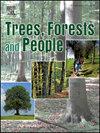Ethnobotanical study of medicinal plants used by Lois community of Kakching district, Manipur, India
IF 2.7
Q1 FORESTRY
引用次数: 0
Abstract
The majority of Manipuri still rely on medicinal plants, which have been utilized for generations. The Lois people, who live in the Kakching district of Manipur, have a rich cultural heritage and have long used plants for various purposes, including the production of traditional herbal medicine. Despite the usage of indigenous medicinal plants in the Kakching district, ethnobotanical research has not yet been conducted. The present study aims to document and analyze traditional medicinal plants as well as their associated knowledge and practices among local communities. Quantitative ethnobotanical data was documented from October 2022 to December 2023 using semi-structured interviews, in-person discussions, group discussions, and guided field trips. There were 140 informants for this cross sectional study. Maximum informants were characterized by mostly male practitioners, age around 45–60 years, with high school and diploma level education, farmers and herbalists by occupation. All the collected data were analyzed using MS Excel Spreadsheet, Graph Pad Prism, and ethnobotany R package in R software. We identified 236 traditional medicinal plant species distributed in 80 families and 184 genera used for treating 59 distinct medical conditions under 13 recognized categories of ailments in the present study. With the biggest number of species given and the highest number of dominant families in the area, the Fabaceae and Lamiaceae (20 species) were identified. The most often employed plant parts were leaves and the primary method of preparing cures was decoction. Fidelity level (FL) values ranged from 36.4 % (Ocimum americanum) to 80.4 % (Cucurma domestica). The medicinal plants with comparatively lower FL (below 40 FL value) need proper attention. Informant consensus factor (ICF) value ranged from 0.41 to 0.9. The disease category relating to digestive disorders and cardiovascular diseases had the highest consensus scores (0.9). With 192 use report scores, the greatest number of plant taxa Oroxylum indicum was used to treat stomachache. The Lois people possess considerable traditional ethnomedical expertise. The vegetation in the area supports rich diversity of medicinal plants, but droughts, agriculture, and deforestation pose great threat to their existence. Of the 5 factors studied considering selected informant based ranking, deforestation records to be the highest risk factor. In-depth studies of prospective species for medication development are crucial, as is scientific backing for local conservation initiatives. Prioritizing species with higher-use reports is also necessary.

印度曼尼普尔邦Kakching地区Lois社区药用植物的民族植物学研究
曼尼普尔的大多数人仍然依靠药用植物,这些植物已经被利用了几代人。居住在曼尼普尔邦Kakching地区的Lois人拥有丰富的文化遗产,长期以来一直将植物用于各种目的,包括生产传统草药。尽管Kakching地区使用本土药用植物,但尚未进行民族植物学研究。本研究旨在记录和分析当地社区的传统药用植物及其相关知识和实践。从2022年10月到2023年12月,通过半结构化访谈、面对面讨论、小组讨论和有指导的实地考察,记录了定量的民族植物学数据。这项横断面研究有140名被调查者。按职业划分,最多的供给者主要是男性从业人员,年龄在45-60岁之间,具有高中和文凭水平,农民和草药医生。收集到的所有数据使用MS Excel Spreadsheet、Graph Pad Prism和R软件中的人种学R包进行分析。在本研究中,我们鉴定了236种传统药用植物,分布在80科184属,用于治疗13种公认的疾病类别下的59种不同的医学病症。区内已知种数最多,优势科数最多的是豆科和Lamiaceae(20种)。最常使用的植物部位是叶子,制备药物的主要方法是煎煮。保真度(Fidelity level, FL)值为36.4%(美洲虎)~ 80.4%(家瓜)。FL值相对较低的药用植物(低于40 FL值)需要适当关注。告密者共识因子(ICF)值在0.41 - 0.9之间。与消化系统疾病和心血管疾病相关的疾病类别的共识得分最高(0.9)。治疗胃痛的植物类群Oroxylum indicum最多,使用报告得分为192分。洛伊斯人拥有相当多的传统民族医学知识。该地区的植被支持着丰富多样的药用植物,但干旱、农业和森林砍伐对它们的生存构成了巨大威胁。在研究的5个因素中,考虑到选择的基于信息的排名,森林砍伐记录是最高的风险因素。深入研究药物开发的潜在物种至关重要,为当地保护倡议提供科学支持也至关重要。优先考虑高利用报告的物种也是必要的。
本文章由计算机程序翻译,如有差异,请以英文原文为准。
求助全文
约1分钟内获得全文
求助全文
来源期刊

Trees, Forests and People
Economics, Econometrics and Finance-Economics, Econometrics and Finance (miscellaneous)
CiteScore
4.30
自引率
7.40%
发文量
172
审稿时长
56 days
 求助内容:
求助内容: 应助结果提醒方式:
应助结果提醒方式:


